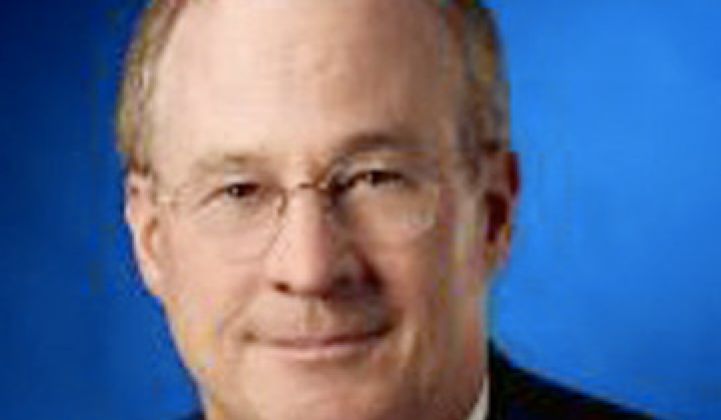PG&E CEO Peter Darbee was one of the first in a new breed of utility executives, and one of the last of the old guard.
Darbee, who will leave the post at the end of the month, was one of the first utility officials to acknowledge climate change and to acknowledge that it was being exacerbated by human activity. He supported carbon legislation.
Like Southern California Edison and SDG&E, PG&E signed several contracts for wind, solar and geothermal power over the last several years to achieve the state's renewable portfolio goals. The public utilities were supposed to get 20 percent of their power from renewable sources by 2010. PG&E gets over 17 percent of its power from renewable sources and is well on its way to making the 20 percent mark within the grace period. The utilities will next have to hit a 33 percent level by 2020. Without these renewable contracts, the solar industry would still be struggling here.
Darbee, who came to PG&E from telecom, was also instrumental in recruiting high-tech executives from companies like Intel.
But if Darbee was an outsider bringing in new ideas to the utility, PG&E under his reign could be insular, arrogant, secretive and stodgy -- in general, behaving the way critics expect utilities to act. Critics were outraged that the company spent $46 million on a failed state ballot initiative that would have made it difficult for communities to set up municipal power organizations. A raft of critics also claimed that PG&E's smart meters 1) inaccurately raised their power bills and 2) were a health hazard.
To be honest, I think PG&E was right to propose the ballot measure and right to pursue smart meters. I live in San Francisco and live in dread of the city government, which can barely manage a bus system, taking over power production. The $46 million cost was excessive, but their position wasn't outrageous. Voters hated the ads more than the ideas behind the initiative.
Smart meters will also help reduce power consumption. PG&E erred in public relations. The smart meters were initially installed in the Central Valley, a conservative part of the state where anti-government fever runs high, during a heat wave and right after a power price increase. PG&E smart meters also don't do anything for consumers, like offer them greater visibility on their expenses or demand response services: they only cut PG&E's operating costs.
Big mistakes, and PG&E exacerbated it with clumsy, ineffectual outreach.
Then, on September 9, 2010, a gas line exploded in San Bruno, killing eight and razing a neighborhood. The investigation is ongoing, but evidence seems to point to mistakes and negligence on the part of PG&E. The flurry of gas line work that took place after the accident indicates to many that maybe the company hasn't been keeping up with mandatory maintenance. Unlike the ballot initiative or the smart meter fiasco, this wasn't a PR gaffe. It was a massive tragedy and PG&E has yet to answer for it.
Board member Lee Cox will sit as interim CEO while a replacement is sought. Maybe this time the company should make its outsider remain an outsider.



